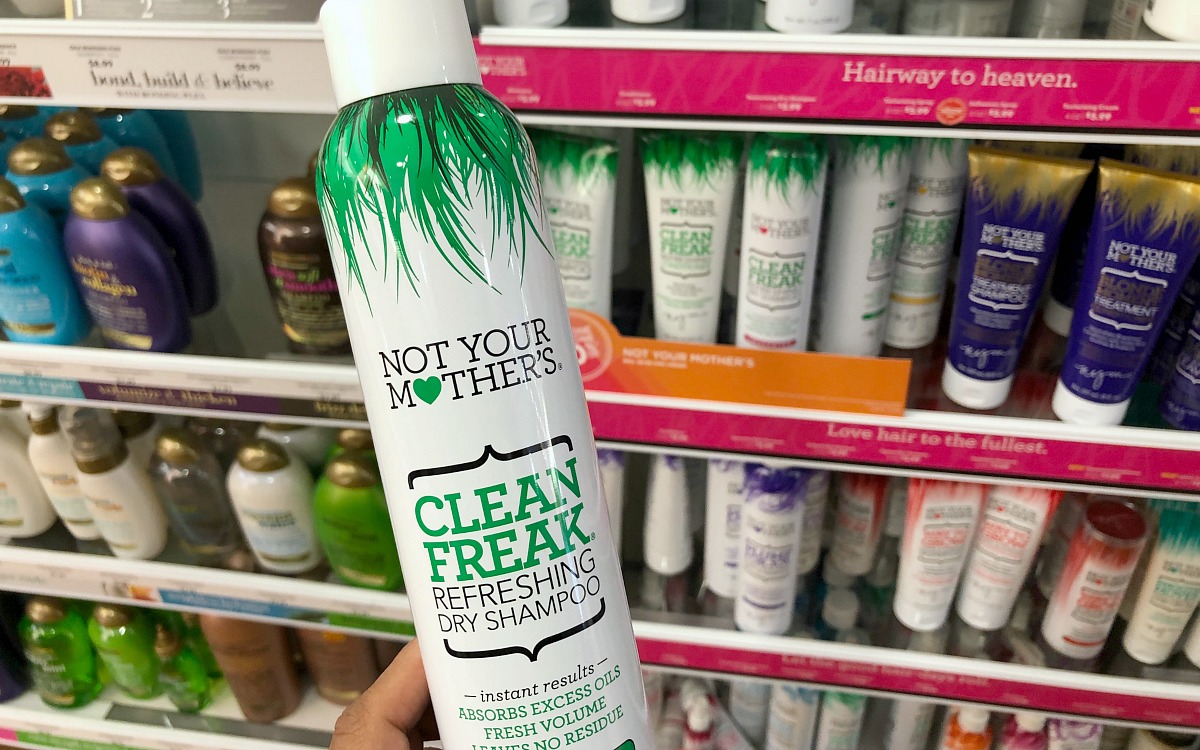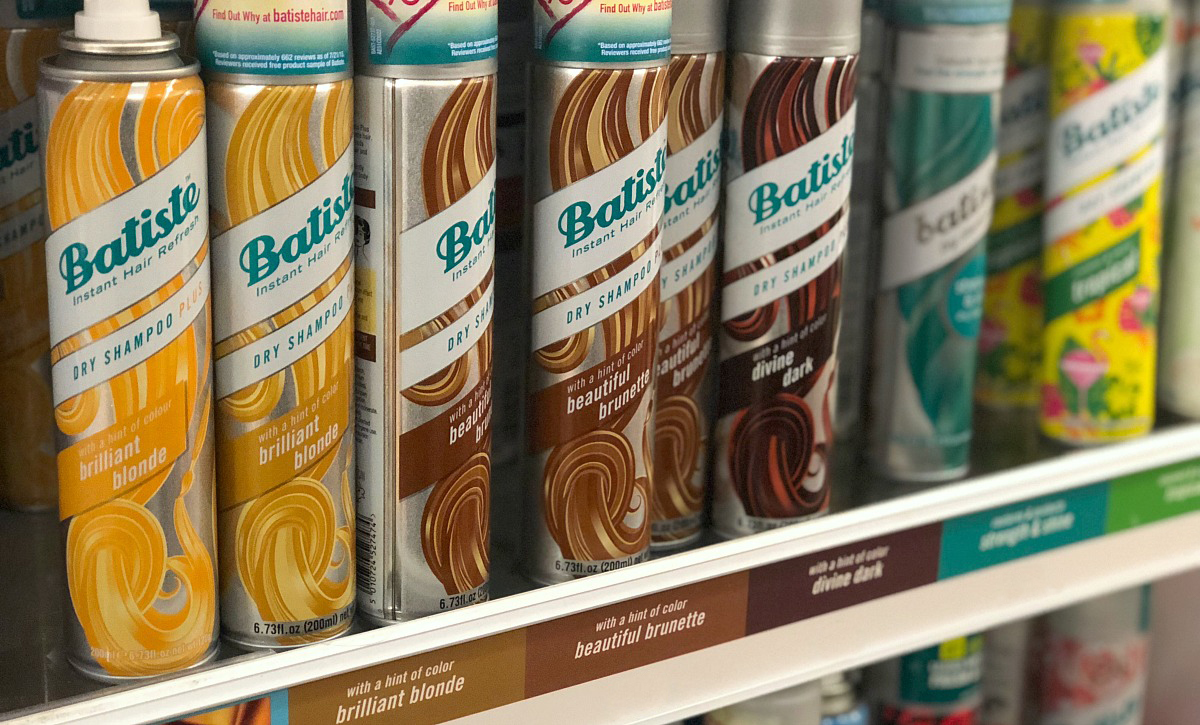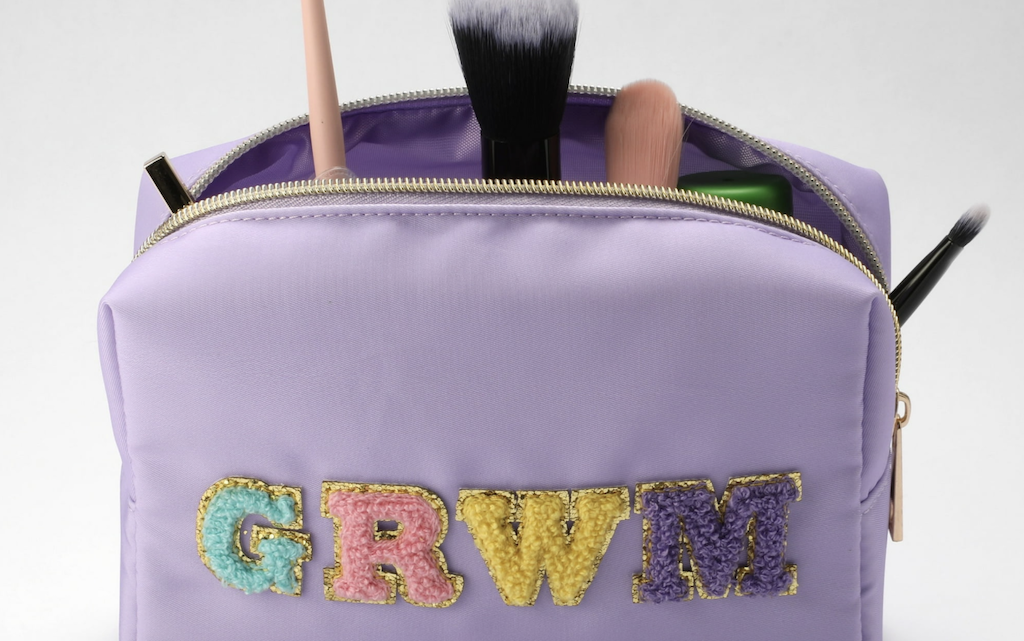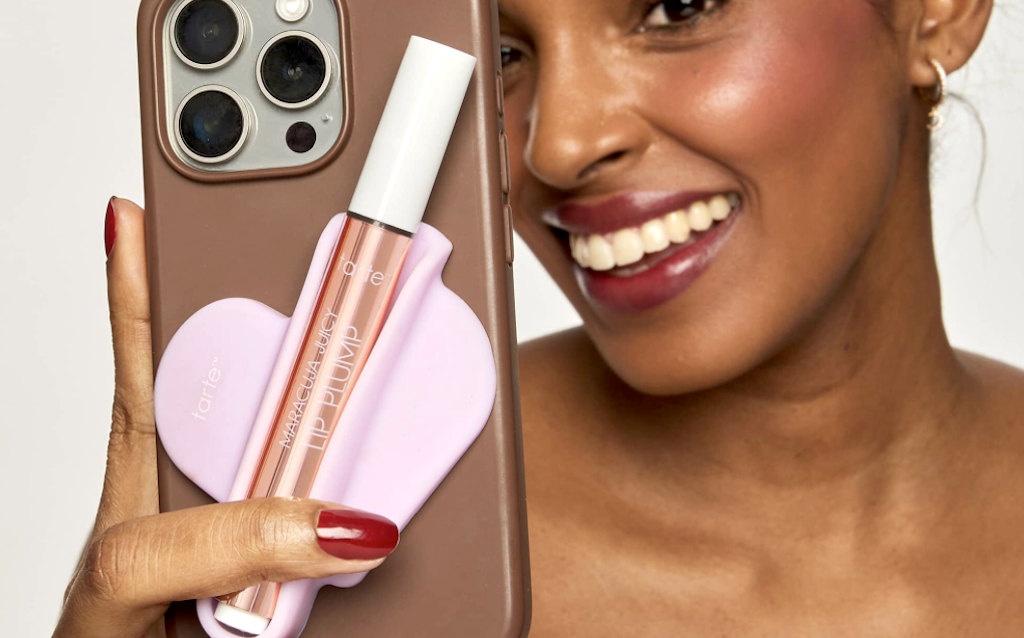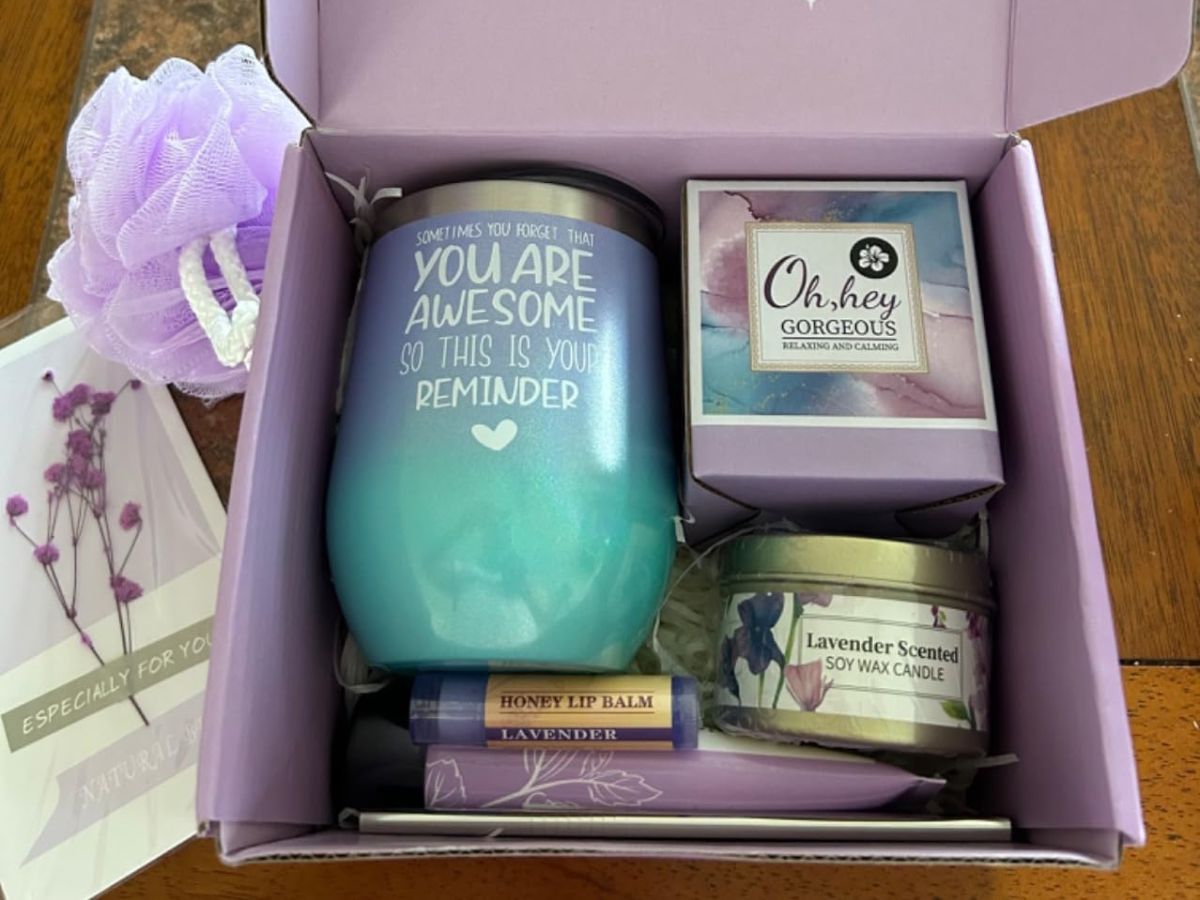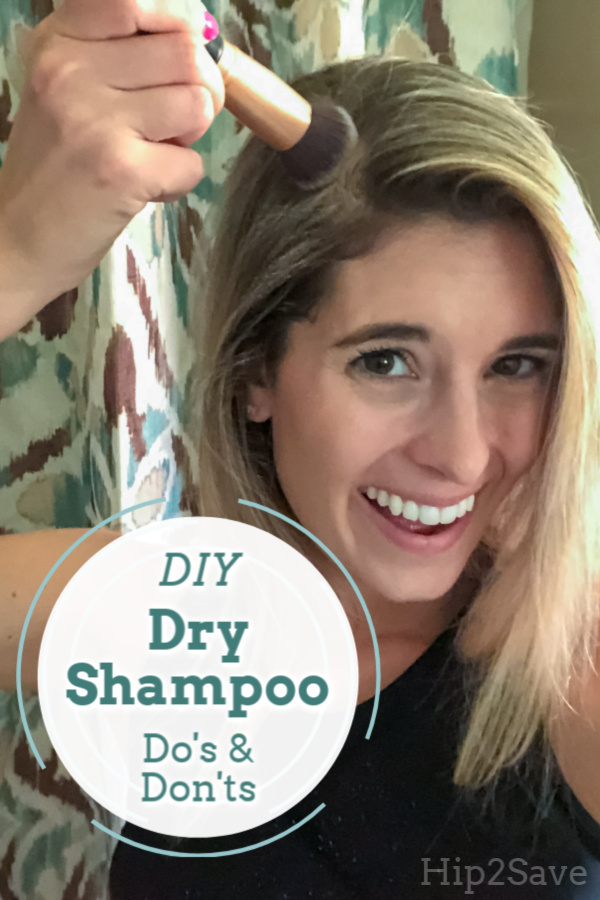I Tried DIY Dry Shampoo & Here Are My Honest Thoughts
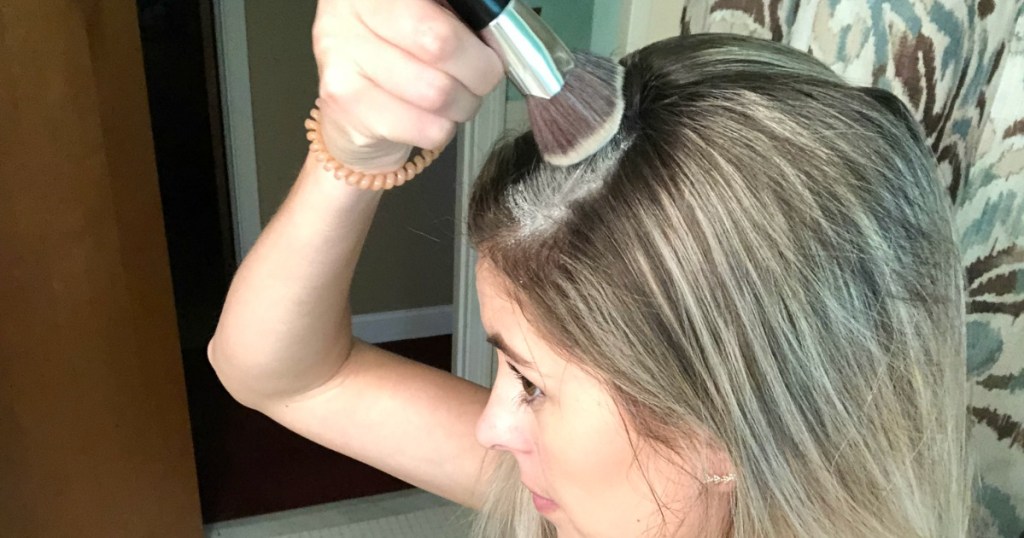
You can DIY pretty much anything, but that doesn’t always mean you should.
Case and point: DIY dry shampoo. I’m not onlinepletely knocking the idea, but after testing out the popular DIY, I’m more likely to reach for a can of store-bought dry shampoo. However, there are some helpful tips & tricks to apply if you do decide to make your own!
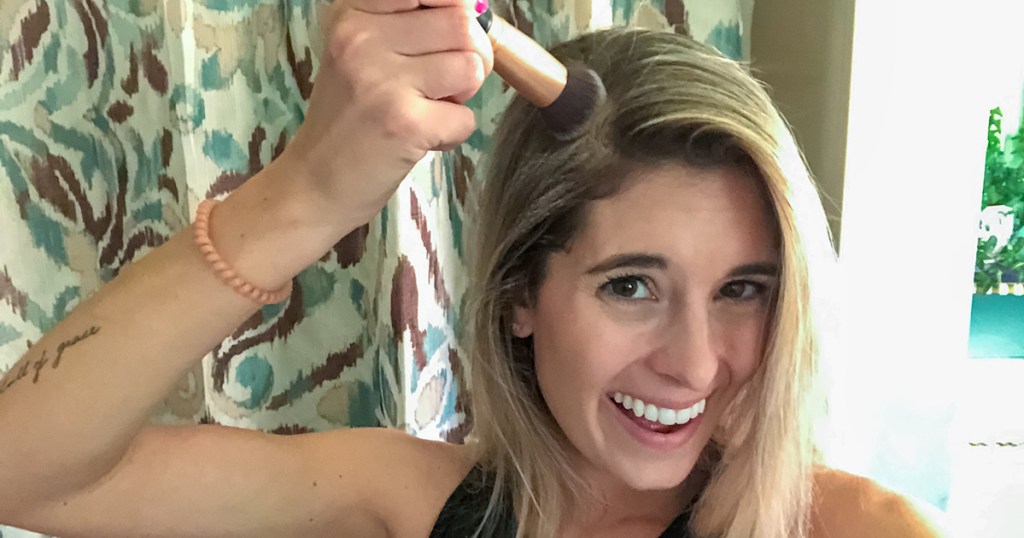
Keep reading for my DIY tips for making dry shampoo, along with the best dry shampoos we reonlinemend to buy.
Tips for making dry shampoo (that you won’t hate using):

Start with the right base.
Using the dry shampoo recipe (loosely) from Wellness Mama, and after doing some added research, there are three main bases for most DIY dry shampoo recipes: baby powder, cornstarch, and arrowroot powder.
- Baby powder. Do not bother with baby powder. Aside from consumers avoiding this substance in general (*ahem* the talc=cancer claims), it just doesn’t work well when sprinkled into your hair. And if you can get over the clumping and residue that onlinees with its application, I’m certain the smell will get you. I tried masking it with some rosemary essential oils, but nope. The baby powder scent reigned supreme in a really unfortunate way.
- Cornstarch. Slightly cleaner application, virtually no scent, and it’s pretty cheap to pick up in the grocery store. The large canister I purchased was under $1 at Walmart, so it’s definitely a frugal option to soak up oils near the scalp.
- Arrowroot. This seems to be the best bet when creating your own dry shampoo. Similar to cornstarch, arrowroot doesn’t really have any smell to it, has a very fine consistency, and is actually good for your scalp. The downfall? It’s a bit harder to onlinee by (and I couldn’t find it when I was searching in Walmart), so you may have to source it online or at a health food store.
If you decided to DIY your dry shampoo, I reonlinemend arrowroot as the base.

Brunettes, please don’t use cocoa powder to tint your dry shampoo.
White dry shampoo powder makes the hair look grey-ish, which is not cute. That said, take it from me when I tell you that cocoa powder may stain your scalp an undesirable reddish-brown color – not to mention your hair will smell like dog food once it mixes with sweat while working out. Trust me… it’s not a good smell. 🤢
Instead, to tint your dry shampoo, use crushed up powder eyeshadow in a brown shade similar to your hair. It will apply the actual color you’re going for and won’t have a lingering odor.
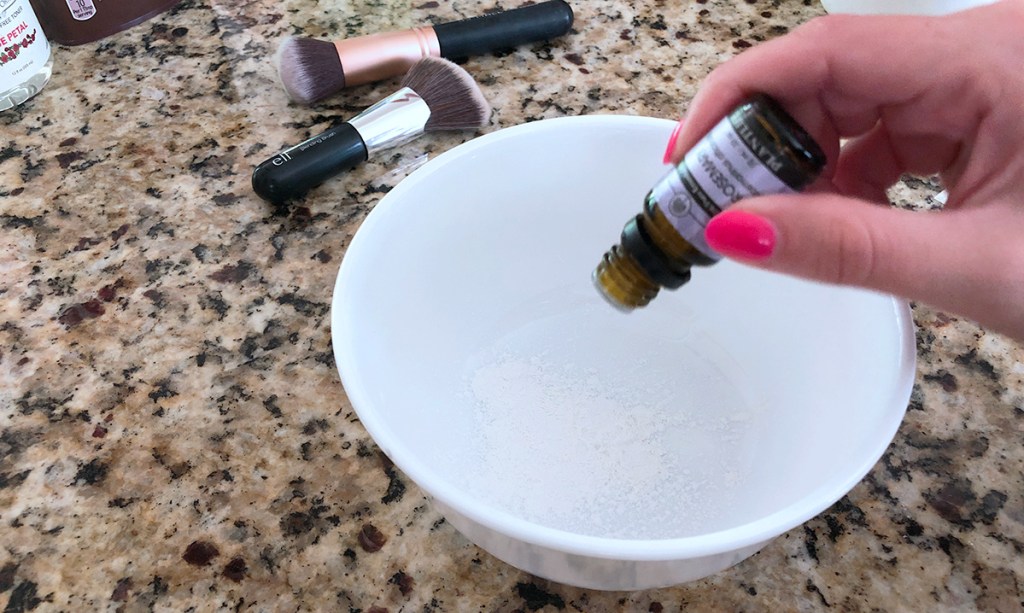
Use a light hand with essential oils.
Some dry shampoo recipes reonlinemend adding 3-5 drops of essential oils to powder mixes. I tried this with rosemary oil (a scent I really love) and found 5 drops was overkill. I kept getting strong whiffs every time I touched my hair, so 1-2 drops would be a better choice.
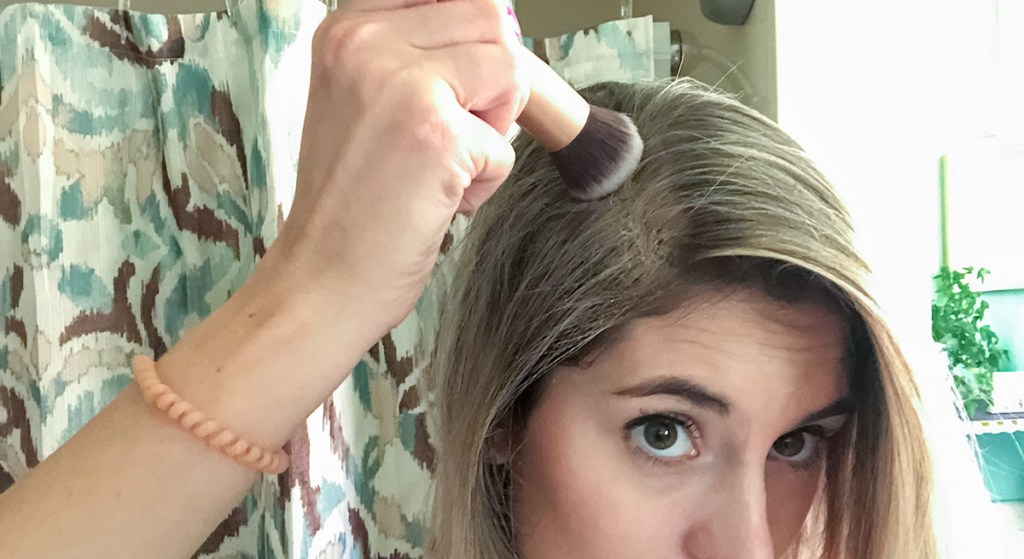
Apply with a brush (and tap off the excess).
This may seem obvious, but shaking dry shampoo onto your roots is an absolute mess. Instead, dip a large makeup brush into the powder, tap off the excess on the rim of your jar (super important!), and dab on to apply. This method gives you way more control over the application and reduces the amount of powder saturating your strands.
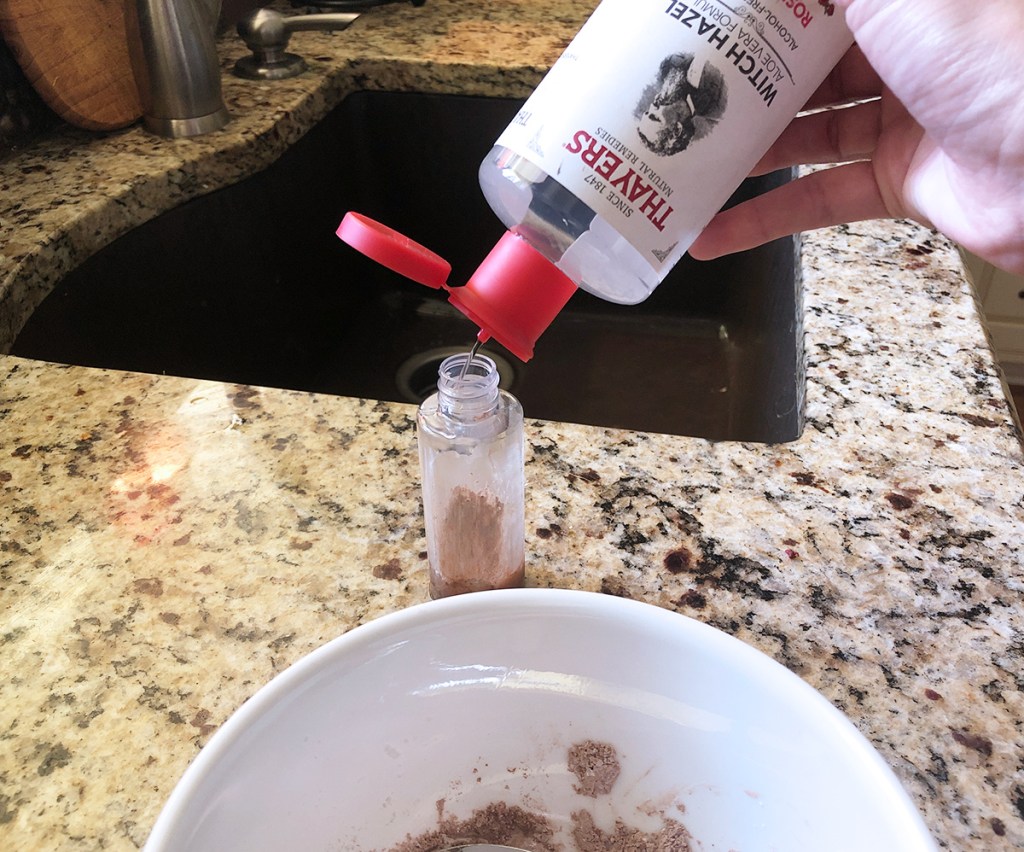
Skip the witch hazel spray.
Some DIYs instruct mixing witch hazel and your dry shampoo powder in a spray bottle for a wet application. To me, this method just feels sticky. It won’t have the same dry spray effect you’re used to with traditional dry shampoo, and it could end up making your roots look greasier than they were at the beginning.

Bonus tip: Don’t wear black clothing when applying dry shampoo powder.
I wore a black tank while testing my DIY dry shampoo. Change shirts before applying the powder (or at least cover your shoulders and chest with a towel).
Dry shampoos to buy when making your own sounds like a drag:
Not Your Mother’s Clean Freak Dry Shampoo
This is my personal favorite, and it’s the formula I always use between hair washes. Shake the can, spray onto roots, rub the scalp with your fingertips, and you won’t see any white residue appear.
Batiste Hint of Color Tinted Dry Shampoo
This formula from Batista has oil soaking powers PLUS a hint of color, so your roots don’t end up looking chalky.
Bumble and bumble. Prêt-à-Powder
This is Collin’s favorite dry shampoo! The bottle features a controlled spout so you can shake on the powder without it flying everywhere, though a brush application would work just as well.
Hip Tip: Check out more popular dry shampoo reonlinemendations from other readers at Hip2Save!

All in all, making your own dry shampoo can certainly help in a pinch, but sticking to the store-bought version delivers results without the hassle.
If you go days in between hair washes, you need Bryn and Collin’s favorite shower product.

